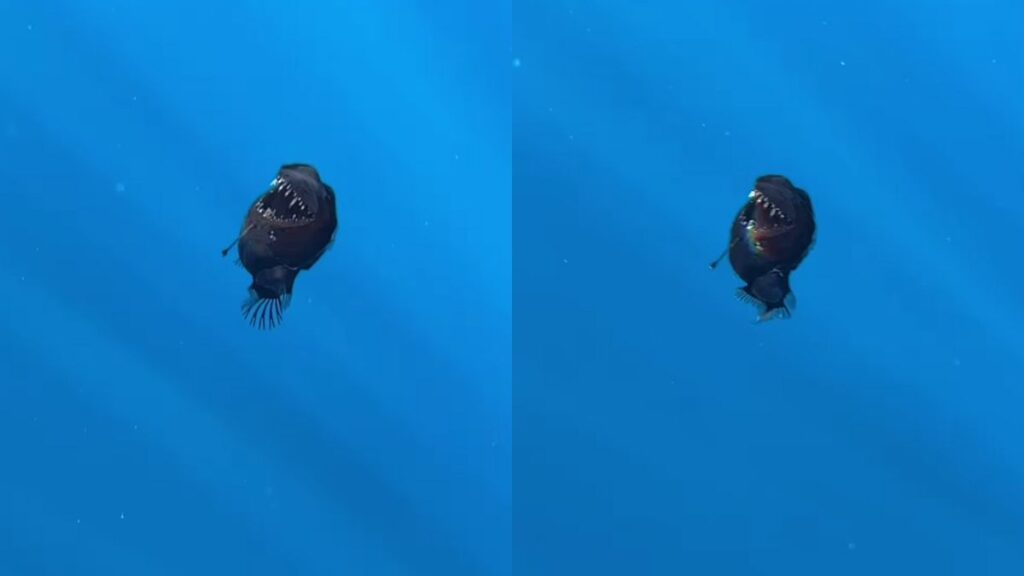Rare Daylight Sighting of the Eerie and Creepy Black Sea Devil Anglerfish: Watch the fascinating occurrence

In an astonishing discovery off the coast of the Canary Islands, Spanish marine researchers have captured the first-ever daylight footage of the elusive black sea devil anglerfish. The expedition, led by Condrik Tenerife—a conservation group focused on sharks and stingrays—was originally set to document pelagic sharks when photographer David Jara Boguñá encountered the mysterious deep-sea predator.
Typically found at depths of up to 1,500 meters in pitch-black waters, the anglerfish, known scientifically as Melanocetus johnsonii, was seen gracefully gliding near the surface. Its eerie appearance, complete with needle-sharp teeth and a bioluminescent lure used to attract prey, makes it one of the ocean’s most fascinating and bizarre creatures.
An Unexpected Encounter and Its Implications
Marine biologist Laia Valor recounted the moment of discovery: “We were returning to port when I noticed something unusual—a dark shape in the water that was clearly not debris.” The team observed the creature for about an hour before it sadly expired, after which it was transported to the Museum of Nature and Archaeology in Tenerife for further study.
Experts speculate that factors such as the recent El Niño event, which can disrupt typical ocean currents, may have forced the anglerfish from its deep-sea habitat into shallower, daylight waters. Alternatively, the creature might have been ill or escaping from a predator, leading to its atypical behavior.
This unprecedented observation not only provides invaluable insight into deep-sea biodiversity but also deepens the mystery surrounding one of the ocean’s most enigmatic residents. With roots tracing back to its first documented discovery in 1863 near Madeira, the black sea devil continues to captivate scientists and the public alike, reminding us how much there is yet to learn about the depths of our oceans.









